

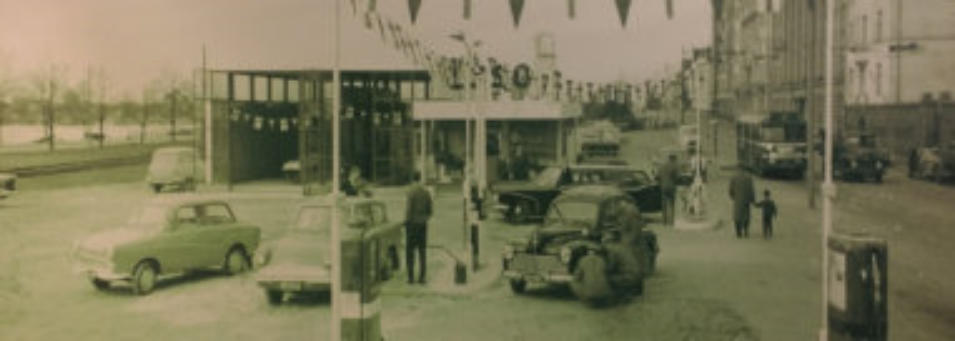

The Swinging 60´s


Autobianchi Bianchina
Cabriolet - 1963
Autobianchi produced only a handful of models during its lifetime, which were almost exclusively small cars, with the biggest being the short-lived Autobianchi A111, a small family car. Autobianchis were priced higher than Fiat models of similar size and the brand was used by Fiat to test new and innovative concepts which later found their way into mainstream Fiat vehicles; these concepts included fibreglass bodies and front-wheel drive.Fiat 500 - 1969
The Fiat 500 (Italian: Cinquecento) is a city car produced by the Italian manufacturer Fiat between 1957 and 1975. Launched as the Nuova (new) 500 in July 1957, it was a cheap and practical town car. Measuring only 2.97 metres (9 feet 9 inches) long, and originally powered by an appropriately sized 479 cc two-cylinder, air- cooled engine, the 500 redefined the term "small car" and is considered one of the first city cars.GLAS Isar T700 - 62
The Glas Isar is a small two door four seater car produced by Hans Glas GmbH at their Dingolfing plant. The car was first presented as the Goggomobil T600 in September 1957 at the Frankfurt Motor Show, with volume production starting in August 1958. Initially Glas described it simply as a “big Goggomobil”, but in Autumn 1959 it was rebranded as the Glas Isar. At the same time a kombi (estate car) version joined the range. A minor facelift occurred in August 1960 and the Isar continued in production till the end of Summer 1965.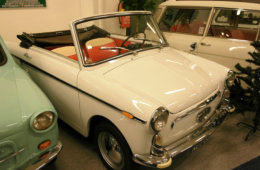
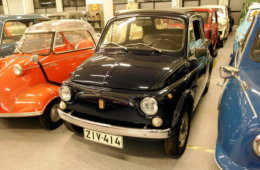
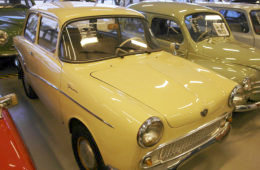
Goggomobil T250 - 1961
Goggomobil was a series of microcars produced in the Bavarian town Dingolfing after World War II by Glas. Glas produced three models on the Goggomobil platform: the Goggomobil T sedan, the Goggomobil TS coupé, and the Goggomobil TL van. The engine was an air- cooled, two-stroke, two-cylinder unit originally displacing 250 cc, but later available in increased sizes of 300 cc and 400 cc. It had an electric pre-selective transmission built by Getrag and a manual clutch. The engine was behind the rear wheels. Suspension was independent all round using coil springs with swing axles.Jalta Saporoshez - 67
Der Saporoshez (ukrainisch Запорожець, russisch Запорожец – Saporoschez, „der aus Saporischschja“) war eine Automobil-Baureihe des sowjetischen, beziehungsweise ukrainischen Herstellers Saporisky Awtomobilebudiwny Sawod (SAS) in der Stadt Saporischschja; die Baureihe wurde von 1960 bis 1994 hergestellt. Umgangssprachlich wurden die Fahrzeuge in Deutschland – vor allem in der früheren DDR – meist Saporosch oder einfach Sapo genannt. In den westeuropäischen Ländern wurde Saporoshez unter den Exportnamen Yalta/Jalta, Eliette und ZAZ verkauft.Lloyd Alexander TS - 60
Norddeutsche Automobil und Motoren GmbH (North German Automobile and Engines) was a German automobile manufacturer, created in 1908 and owned by the Norddeutscher Lloyd shipping company. The factory was in Bremen. Many of the products of the company and its successors were badged with the Lloyd marque. The German Lloyd had no connection with the British Lloyd Cars Ltd company active between 1936 and 1951.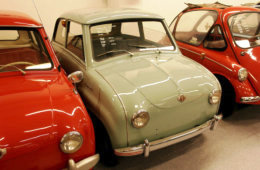
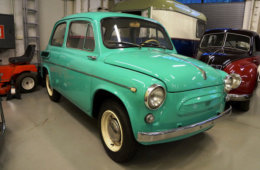
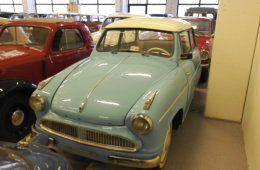
1960-1969
As the 1960s began, American cars showed a rapid rejection of 1950s styling excess, and would remain relatively clean and boxy for the entire decade. The horsepower race reached its climax in the late 1960s, with muscle cars sold by most makes. The compact Ford Mustang, launched in 1964, was one of the decade's greatest successes. The "Big Three" American automakers enjoyed their highest ever sales and profitability in the 1960s, but the demise of Studebaker in 1966 left American Motors Corporation as the last significant independent. The decade would see the car market split into different size classes for the first time, and model lineups now included compact and mid-sized cars in addition to full-sized ones. The popular modern hatchback, with front-wheel-drive and a two-box configuration, was born in 1965 with the introduction of the Renault 16,many of this car's design principles live on in its modern counterparts: a large rear opening incorporating the rear window, foldable rear seats to extend boot space. The Mini, released in 1959, had first popularised the front wheel drive two-box configuration, but technically was not a hatchback as it had a fold-down bootlid.


Photos mainly by Matti Kreivilä. Historical facts and technical details of the vehicles provided by Wikipedia. Movies YouTube.


- Autobianchi Transformable - 1960
- Autobianchi Familiare - 1962
- Autobianchi Panoramica - 1962
- Autobianchi Cabriolet - 1963
- BMW Isetta 300 - 1956
- BMW Isetta 300 - 1959
- BMW Isetta Standard
- BMW 600 - 1959
- Bond Bug ES 700 - 1973
- Fiat Topolino - 1936
- Fiat Topolino - 1939
- Fiat Topolino - 1951
- Fiat Belvedere - 1952
- Fiat Topolino - 1954
- Fiat 600 - 1955
- Fiat 500 - 1963
- Fiat 500 - 1969
- Fiat Multipla - 1965
- Fuldamobil 4-wheel - 1958
- Fuldamobil King S7 - 1959
- GLAS Isar T700 - 1962
- Goggomobil T400 - 1959
- Goggomobil T250 - 1961
- Goggomobil T250 - 1969
- Goggomobil Coupe
- Heinkel Kabine - 1959
- Honda N600 - 1970
- Jalta Saporoshez - 1967
- Lloyd Alexander TS - 1960
- Messerschmitt KR200 - 1960
- Messerschmitt KR201
- Messerschmitt KR200 - 1963
- Messerschmitt KR200 - 1964
- NSU Prinz I - 1958
- Scootacar Mk3 - 1963
- Steyr-Puch 500 -1961
- Steyr-Puch 650 - 1964
- Trabant P 50 - 1961
- Trojan 603/198 - 1964
- Trojan 3-wheeler - 1964
- Trojan 3-wheeler - 1964
- Vespa 400 - 1959
- Victoria Spatz 250 - 1957
- Zündapp Janus - 1959


- About Scooters
- Apollo moped
- Cezeta 175 - 1960
- Heinkel Tourist - 1960
- Lambretta 125 - 1953
- Puch SR 150 - 1958
- Pyrkijä moped
- Suzuki Burgman 400
- Tunturi City - 1980
- Vespa 150 - 1959
- Yamaha Passola 50 - 1980
- Zündapp Bella w. sidecar - 1960
- Zündapp Bella 204 - 1960
- Zündapp Bella 200 Deluxe - 1963
- Zündapp Combinette






























